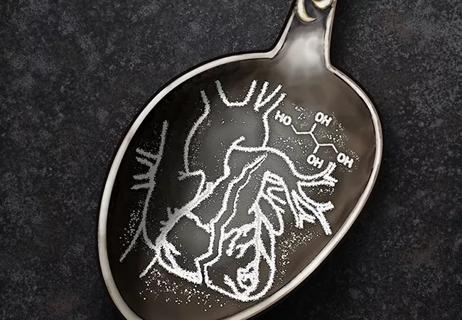Machine learning may improve risk prediction and guide therapy

Two multicenter heart failure-related research projects involving artificial intelligence (AI) are underway at Cleveland Clinic — one for better predicting heart transplant rejection and the other for characterizing noncompaction cardiomyopathy. Each recently received funding of $3 million from the National Institutes of Health (NIH) over a four-year period to apply advanced computer analytics to image assessment to better evaluate risks and ultimately improve therapeutic decisions.
Advertisement
Cleveland Clinic is a non-profit academic medical center. Advertising on our site helps support our mission. We do not endorse non-Cleveland Clinic products or services. Policy
“Cardiovascular care is very dependent on diagnostic studies, and their interpretations may vary by expertise,” says W.H. Wilson Tang, MD, staff cardiologist and Research Director in Cleveland Clinic’s Section of Heart Failure and Cardiac Transplantation Medicine. “The promise of AI is that it may be able to identify pathologic features more accurately and consistently, and thereby improve evaluation and management.”
Dr. Tang, a physician-scientist and translational researcher interested in applying AI to clinical cardiology, is actively involved in both projects, profiled below.
Cardiac allograft rejection surveillance and diagnosis are currently done primarily by histological grading of endomyocardial biopsy. But the grading standard has poor prognostic accuracy and limited ability to discern mechanisms of rejection. As a result, management decisions put patients at risk for inappropriate treatment.
The CACHE (Computer-Assisted Histologic Evaluation of Cardiac Allograft Rejection) project will use computational image analysis to assess endomyocardial biopsy specimens, comparing morphologic biomarkers with clinical outcomes. New biomarkers of rejection-related injury — including immunologic markers — are expected to be discovered with the help of immunofluorescence panels.
“The computer algorithms may capture features that we don’t detect visually,” Dr. Tang explains. “Some may be evidence of rejection that have yet to be appreciated.”
The CACHE investigational team is led by researchers from the University of Pennsylvania and Case Western Reserve University who previously developed and evaluated computer algorithms that identify novel morphological features in histologic specimens to improve upon the accuracy of classifying failing versus nonfailing hearts. With the new NIH grant, CACHE will be further refined using cardiac biopsy samples from three major transplant centers in the U.S., with Dr. Tang overseeing research activities at the Cleveland Clinic site in collaboration with researchers from the University of Pennsylvania and Cedars-Sinai. Samples obtained retrospectively will be compared against clinical outcomes, and then accuracy of the optimized model will be validated in a multicenter prospective cohort.
Advertisement
“Our goal is to develop an accurate, consistent and informative system for diagnosing allograft rejection that correlates with patients’ clinical trajectories,” says Dr. Tang. “This technique is also expected to be applicable to other organ transplants.”
“One of the most significant risks of heart transplantation is the body’s response to reject the donor heart,” says Jerry Estep, MD, Cleveland Clinic’s Section Head of Heart Failure and Transplantation. “Improving diagnostic accuracy to detect this complication may position providers to offer earlier and enhanced treatment. Research like this that incorporates AI analysis is a step in the right direction to improve post-transplant outcomes.”
Left ventricular (LV) noncompaction is a rare congenital cardiomyopathy involving a layer of loose myocardial tissue that appears on MRI as prominent trabeculations and deep recesses extending from the LV cavity to the subendocardial surface of the ventricular wall. The disorder is poorly understood and highly heterogeneous, as some patients have a benign course while others develop heart failure, embolic stroke from blood clots at these recesses, arrhythmias and sudden cardiac death. It is estimated that about half of LV noncompaction cases are inherited and have a genetic component.
LV noncompaction currently is diagnosed by criteria based on echocardiography and MRI. With the widespread use of these imaging studies, the condition is increasingly recognized and diagnosed. But that does not necessarily mean it’s being appropriately treated, notes Dr. Tang, who has a special interest in the condition (see Heart. 2013;99:681-689).
Advertisement
“It’s often difficult to differentiate pathological from benign hypertrabeculation with current imaging techniques,” he observes. “This leads to potential excessive use of implantable cardioverter-defibrillators and anticoagulation therapies, as many patients may have been diagnosed with LV noncompaction yet may not have a malignant clinical course.”
Dr. Tang is co-principal investigator of a study of LV noncompaction that recently received the second of the NIH grants mentioned above. The investigation, known as the International Consortium for Multimodality Phenotyping in Adults with Noncompaction (NONCOMPACT), is the first international effort to collect comprehensive clinical, genetic, structural and functional information for detailed computer analysis with the goal of differentiating pathologic from benign patterns of noncompaction.
A large cohort of adults with suspected LV noncompaction will be investigated from Cleveland Clinic, Stanford University and the University of Pennsylvania, as well as from centers in the Netherlands and South Korea, with up to three-year follow-up. Associations between myocardial structure by MRI and contractility with echocardiography will be investigated, with advanced imaging expert Deborah Kwon, MD, Director of Cardiac MRI in Cleveland Clinic’s Section of Cardiac Imaging, playing a key collaborative role. In addition, a subset of patients will undergo high-resolution cardiac CT for detailed structural characterization of the myocardial wall.
Advertisement
Novel analytical methods will be developed to characterize the 3D architectural complexity using deep learning techniques. Machine learning-based analytics will then be used to create predictive models of risk, which can be compared to current models and treatment criteria.
“Both of these research projects are bringing 21st-century technology to diagnostics,” says Dr. Tang. “While artificial intelligence may not replace clinicians, it has the potential to make us smarter by helping us manage our patients with greater insight. The responsibility and opportunity for clinicians is to harness its potential.”
Advertisement
Advertisement

Study authors urge reevaluation of the sweetener’s safety designation by food regulators

Surprise findings argue for caution about testosterone use in men at risk for fracture

Findings support emphasis on markers of frailty related to, but not dependent on, age

Additional analyses of the two trials presented at 2023 ESC Congress

Prospective SPIRIT-HCM trial demonstrates broad gains over 12-month follow-up

Review of our recent experience shows it’s still a safe option

High-dose omega-3 fatty acid conferred no outcomes benefit over corn oil in high-risk patients

Phase 3 study may lead to first FDA approval for the indication